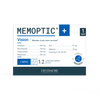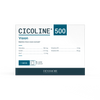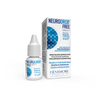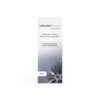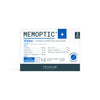All about glaucoma
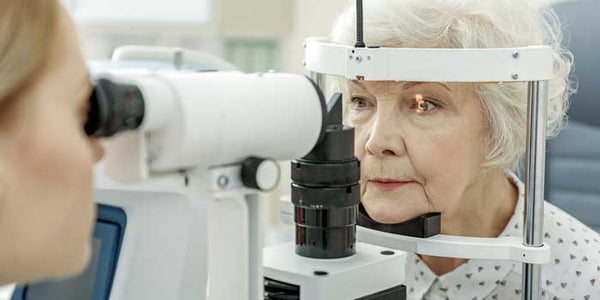
Glaucoma and its different forms
Pathology of the optic nerve
Glaucoma is a disease of the optic nerve . The insertion area of the optic nerve, located at the back of the eyeball, is called the papilla or head of the optic nerve. It is at this level that the extensions of the retinal ganglion cells leave the eyeball to form the optic nerve. Comparable to a cable a few millimeters in diameter, it carries visual information to the part of the brain that processes it. Deterioration of the optic nerve most often causes low-noise symptoms on the visual field and the quality of vision . In the vast majority of cases, glaucoma occurs when there is increased pressure in the eye.
Chronic open-angle glaucoma
It is the most frequent form of glaucoma which represents almost 90% of cases. Gradual and insidious onset, symptoms are generally absent or delayed. It is related to a slow and progressive degradation of the optic nerve, most often due to an increase in intraocular pressure.
Acute angle closure glaucoma
Much rarer, this presentation is due to a sudden closure of the iridocorneal angle . The intraocular pressure then increases rapidly, over a few hours. The symptoms are then marked by intense pain , accompanied by nausea and vomiting as well as diminished vision . It is a therapeutic emergency in ophthalmology.
Glaucoma risk factors
heredity
Heredity is the main risk factor without the exact cause being currently understood. It is found in 30% of cases . People who have a first-degree relative with glaucoma should be strongly urged to get screened and monitored .
age
Age is then an important factor. Thus, the frequency increases with the years since galucoma affects 1 to 2% of the population over 40 years old and about 10% of people after 70 years old.
Ocular hypertension
Ocular hypertension is excessive pressure inside the eye. This is a major risk factor for glaucoma. Intraocular pressure (IOP) is considered elevated above 21 mmHg. This excess pressure can, in the long term, damage the visual fibers of the optic nerve and alter the perception of images.
Even if it is very often found, ocular hypertension is not the only factor that influences the degradation of the optic nerve since a normal IOP does not prevent some people from developing glaucoma.
Other causes
Other factors can promote the occurrence of glaucoma: high myopia , an abnormally thin cornea , long-term corticosteroid treatment, as well as a history of eye surgery or trauma.
Note that high blood pressure is not a risk factor for glaucoma, contrary to what one might think. In fact, intraocular pressure is not correlated with arterial pressure.
Often late symptoms
What you should know above all is that in many cases, glaucoma does not present any manifestation. Painless and without visual signs until an advanced stage, it may be asymptomatic for a long period.
Glaucoma typically impairs the visual field , first affecting the periphery and gradually spreading towards the center. This loss of the characteristic peripheral visual field is most often insidious. Indeed, the person concerned does not always realize it because a phenomenon of compensation is set up by the other eye.
The decline in vision is also one of the major symptoms that should lead to an ophthalmological consultation.
Screening and diagnosis
As glaucoma has the particularity of showing no symptoms for a very long time, systematic screening is recommended from the age of 40 .
Several ophthalmological examinations can be performed, including:
- measurement of visual acuity ;
- measurement of intraocular pressure using a tonometer of which there are several models (air tonometer, Goldmann applanation tonometer). It is considered high from 21 mmHg;
- measurement of the thickness of the cornea (pachymetry) also important because it can distort the measurement of intraocular pressure.
Treatments to act on intraocular pressure
No treatment is known to date to cure glaucoma or restore vision. But the treatments currently used make it possible to delay the progression of the disease by reducing and normalizing the intraocular pressure . Recommendations have recently been published by the French National Authority for Health (HAS) (1) .
medical treatment
The instillation of eye drops (eye drops) once or twice a day is the first-line treatment for chronic open-angle glaucoma. Success is above all conditioned by compliance with the treatment, that is to say its proper daily application.
4 classes of drugs are mainly used and possibly associated with each other. These drugs must be taken for life .
Glaucoma laser treatment
Carried out in the office of the ophthalmologist and almost painless, the laser treatment is indicated and performed by the ophthalmologist. It aims to repermeabilize the liquid evacuation orifices inside the eye. Several techniques can be used.
Often offered when drug treatment no longer controls intraocular pressure, they can also be indicated immediately in certain specific cases.
Surgical treatment of glaucoma
As a general rule, surgery is reserved for forms of glaucoma that progress despite well-conducted medical treatment, with unbalanced intraocular pressure and worsening visual field loss.
In other cases, it is indicated in case of poor tolerance to medical treatment or an insufficient response to laser treatments.
Neuroprotection in the management of glaucoma
Mechanisms of action of neuroprotection
The optic nerve is made up of the axons of the retinal ganglion cells which are extensions of the nerve fibers specific to this region. Neurodegeneration and vascular factors (local circulatory failure) are often implicated in optic nerve damage. Research is studying the possibility of acting to preserve its fibers and thus maintain visual functions.
Through their targeted and synergistic mechanisms of action, three molecules present in food supplements could have a complementary and synergistic action in the therapeutic management of glaucoma.
Citicoline
Citicoline has been studied for several decades in ophthalmology. It would have a neuroprotective role and would attenuate the loss of ganglion cells . It would also have a blocking role in the cascade of events leading to cell death (apoptosis) (2) .
This would have a clinical impact by slowing visual field deterioration in patients with controlled intraocular pressure (3) . Other studies also suggest multi-level intervention on antioxidant circuitry.
Very recently, a study including patients with open-angle glaucoma, whose intraocular pressure was controlled thanks to the treatment, received a combination of citicoline and homotaurine. The search for efficacy was based on the electroretinogram which represents an objective and direct measurement of retinal function. The results support a positive effect in patients receiving this supplement (4) .
Ginkgo biloba extract
Ginkgo biloba extract is a powerful antioxidant and vascular protector. Its main virtue is to improve blood flow . In the case of glaucoma, one study showed that blood flow to the eye was increased in people with glaucoma who took Ginkgo biloba extract. However, evidence is still lacking regarding the clinical effect on the symptoms of glaucoma.
It would also have a protective role of the retina vis-à-vis oxidative stress by preventing the oxidation of the membranes of the blood capillaries of the retina.
Magnesium
Magnesium is known for its neuroprotective effect and a neurovascular protective agent .
Some studies are in favor of an improvement in the quality of the visual field, in the case of glaucoma with normalized intraocular pressure, under cover of a supplementary supply of magnesium at a dose of 500 mg per day for 1 month (5) . Another study, with a smaller patient sample, confirmed these results.
Sources:
1. Recommendations_glaucoma.pdf https://www.sfo-online.fr/files/medias/documents/Recommandations_glaucoma.pdf
2. Jünemann AGM, Grieb P, Rejdak R. Bedeutung von Citicolin bei der Glaukomerkrankung. Ophthalmol. 2021;118(5):439-48.
3. Ottobelli L, Manni GL, Centofanti M, Iester M, Allevena F, Rossetti L. Citicoline oral solution in glaucoma: is there a role in slowing disease progression? Ophthalmol J Int Ophthalmol Int J Ophthalmol Z Augenheilkd. 2013;229(4):219-26.
4. Rossi GCM, Rolle T, De Silvestri A, Sisto D, Mavilio A, Mirabile AV, et al. Multicenter, Prospective, Randomized, Single Blind, Cross-Over Study on the Effect of a Fixed Combination of Citicoline 500 mg Plus Homotaurine 50 mg on Pattern Electroretinogram (PERG) in Patients With Open Angle Glaucoma on Well Controlled Intraocular Pressure. Front Med. 29 Apr 2022;9:882335.
5. Aydin B, Onol M, Hondur A, Kaya MG, Ozdemir H, Cengel A, et al. The effect of oral magnesium therapy on visual field and ocular blood flow in normotensive glaucoma. Eur J Ophthalmol. 2010 Feb;20(1):131-5.
Share
